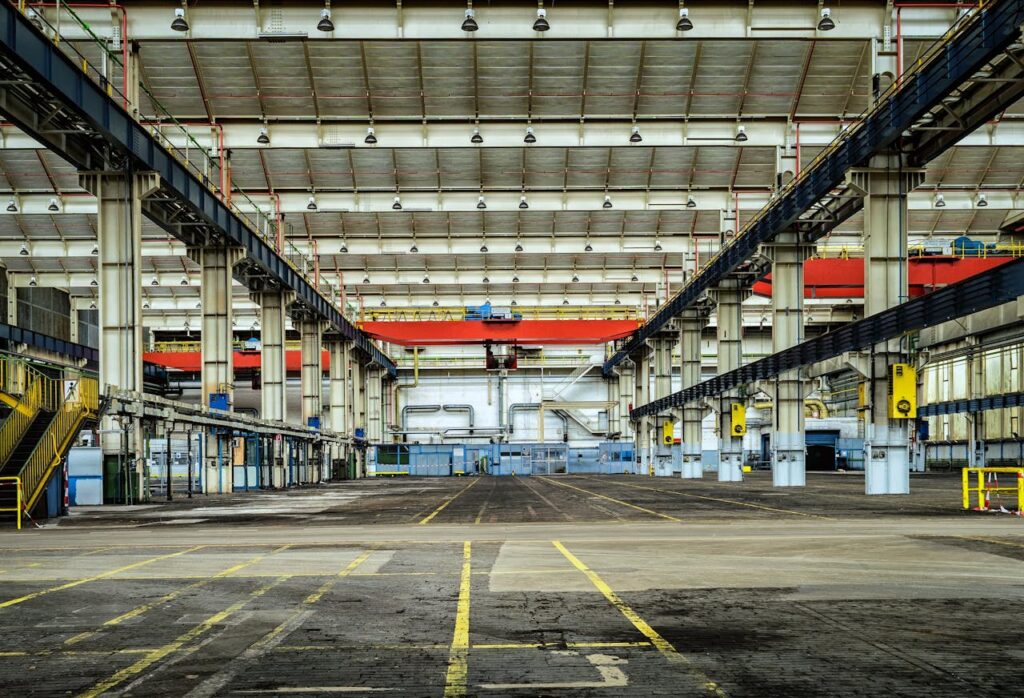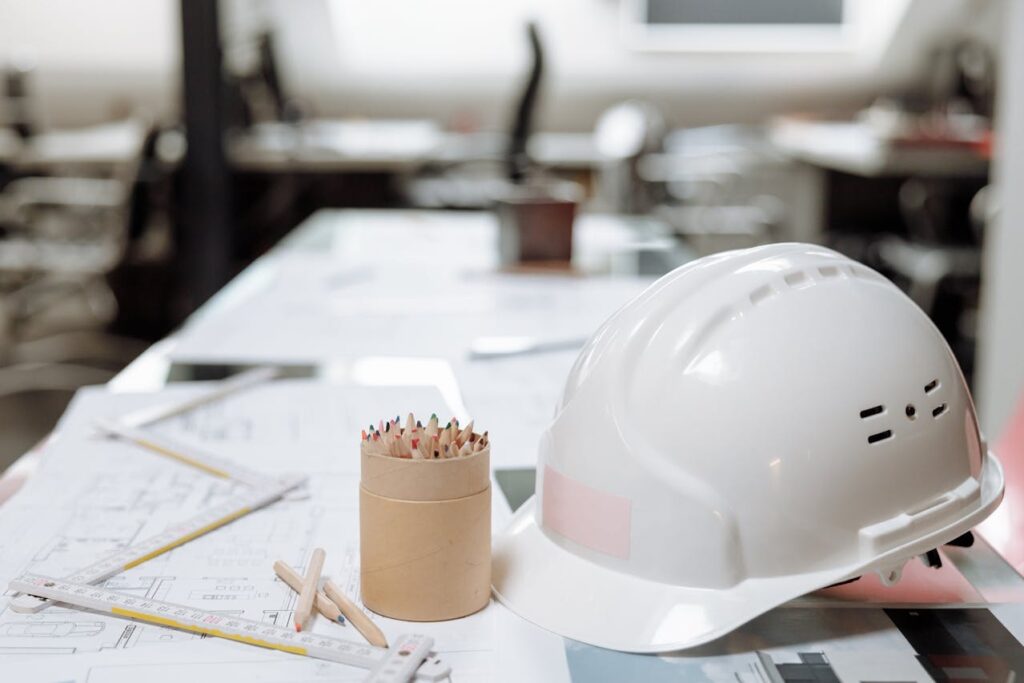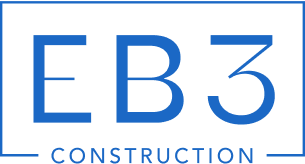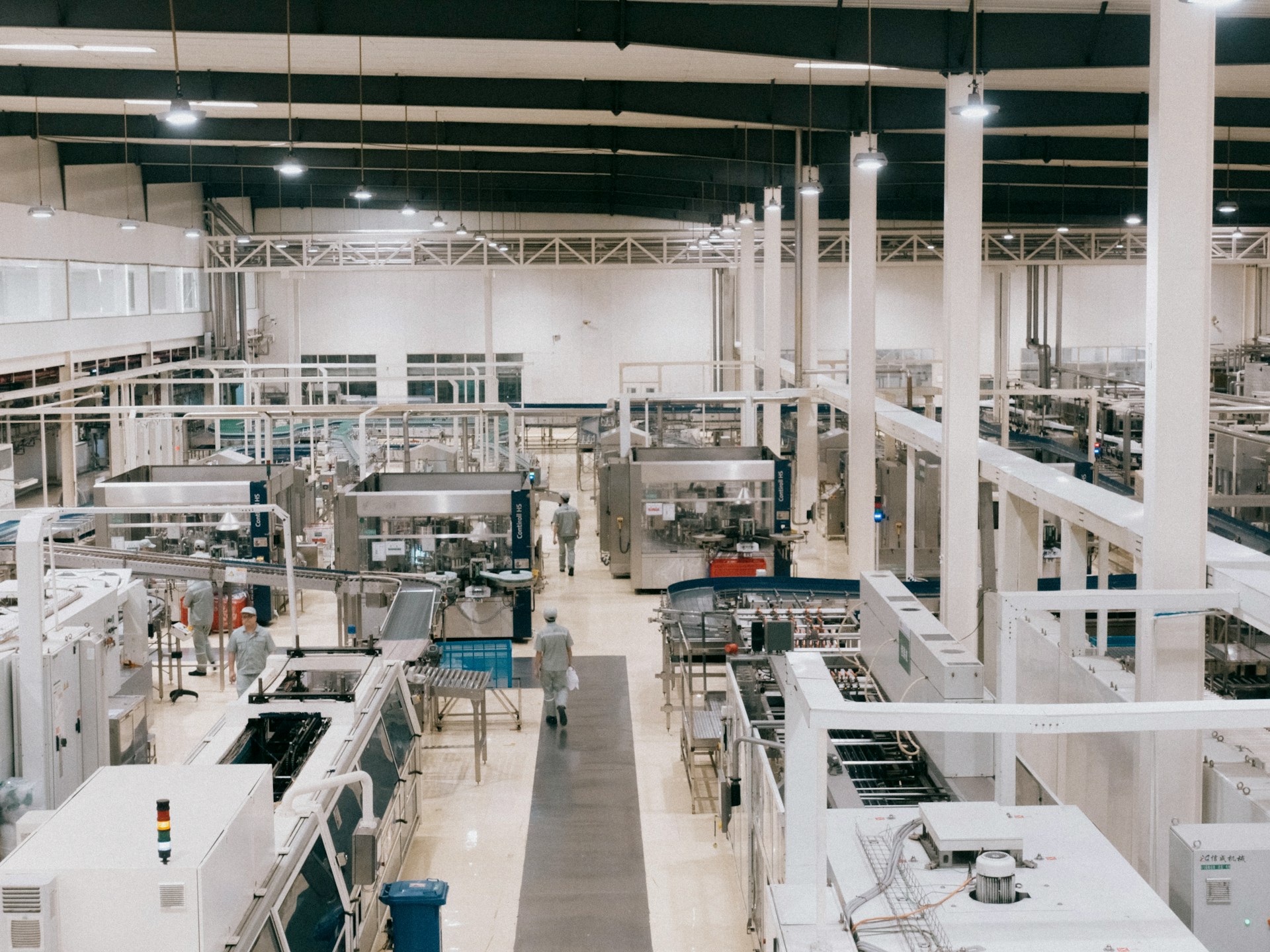Warehouse retrofits take 150% longer than greenfield construction projects. This timeline reality shapes every aspect of your Dallas facility upgrade.
We work with project teams to manage these extended schedules while maintaining operational continuity. Code compliance and permits require coordination with local mechanical and electrical partners throughout the Dallas area. Most retrofits focus on automation integration and storage reconfiguration while keeping daily operations running smoothly.
What Does A Warehouse Retrofit Involve For Dallas Facilities?

Warehouse retrofits focus on extending asset life while boosting efficiency through strategic system upgrades. We assess current infrastructure to identify opportunities for improvement. This evaluation drives decisions about which systems need replacement versus enhancement.
Storage capacity enhancements typically start with racking reconfiguration. Modern pallet rack systems maximize vertical space and improve inventory accessibility. Dense storage solutions like goods-to-person systems bring inventory directly to workers, reducing travel time and increasing pick rates.
Control System Upgrades Transform Operations
Control systems integration connects material handling equipment with warehouse management platforms. We upgrade legacy controls to communicate with modern automation. Real-time data sharing between systems creates unified workflows that maximize throughput.
Conveyor upgrades often include roller systems for heavy pallets and flat belt systems for diverse product handling. Inclined conveyors optimize vertical space when floor area is limited. These systems reduce manual labor while maintaining consistent material flow.
Infrastructure Improvements Support Efficiency
Physical facility updates enhance both function and safety. Insulated metal ceilings improve climate control and reduce energy costs. Roll-up doors speed loading operations and enhance security. Clear travel aisles ensure safe equipment movement and support emergency egress requirements.
Improved lighting reduces errors and supports worker productivity. Organized shelving systems create visual management that helps locate inventory quickly. These upgrades align with Dallas warehouse demands for rapid order fulfillment and accurate inventory management.
We tailor each retrofit scope to operational goals and budget constraints. Work proceeds in phases to avoid major disruptions to daily operations. This approach maintains throughput while delivering measurable improvements in efficiency and capacity.
How Does Phased Planning Reduce Downtime During A Retrofit?
We structure warehouse retrofits through phased implementation to maintain operational continuity. This systematic approach protects throughput while introducing new systems and technology upgrades.
Operations Review And Peak Analysis
Our phased planning begins with a detailed operations review to understand current workflows and capacity demands. We analyze peak operational periods to identify when work can proceed with minimal impact to daily activities. This analysis reveals the optimal windows for construction activities that align with your facility’s natural rhythm.
Peak analysis helps us map when equipment usage is heaviest and when temporary shutdowns create the least disruption. We coordinate with your operations team to understand shift schedules, seasonal fluctuations, and critical production deadlines that cannot be interrupted.
Sequencing Work Around Live Operations
We identify improvement opportunities and sequence them into logical phases that work around live operations. Each phase targets specific areas or systems while maintaining access to essential functions. This sequencing allows one section of the facility to undergo upgrades while other areas continue normal operations.
Existing equipment assessment guides our phasing decisions by determining which systems need immediate attention versus those that can wait for later phases. We prioritize critical path items first, then layer in secondary improvements as operations allow.
Parallel Testing And Commissioning
New systems are installed in stages and tested in parallel with existing operations before full implementation. This parallel testing approach ensures that upgraded systems perform correctly before we transition away from current equipment. We verify functionality, integration points, and safety systems during this testing phase.
Commissioning activities occur alongside ongoing operations to validate performance against design specifications. This parallel approach reduces the risk of system failures affecting production schedules while ensuring all components work together seamlessly.
Ongoing Support And Risk Mitigation
After each phase reaches go-live status, we provide ongoing support to maintain performance and address any issues that emerge. This support includes monitoring system performance, making adjustments, and ensuring smooth operation before moving to the next phase.
Risk mitigation remains constant throughout the phased approach by maintaining backup systems, alternative workflows, and contingency plans. We coordinate closely with your team to address unexpected challenges without compromising operational goals or project timelines.
Which Services And Delivery Methods Should A Dallas Contractor Provide?

Dallas warehouse retrofit contractors should offer three primary delivery methods. Design-build unites architectural and engineering design services with construction performance under a single contract. Construction management emphasizes collaborative partnership throughout the entire process with early engagement to discover cost-effective solutions. General construction provides traditional design-bid-build approach with pre-qualified trade partners.
Preconstruction Planning Capabilities
Preconstruction services create the foundation for project success. We handle detailed planning and budgeting to establish realistic cost models before construction begins. Critical path scheduling coordinates activities and identifies potential bottlenecks early in the process.
Value engineering reviews help optimize project value while meeting operational requirements. Constructability reviews identify potential challenges before work starts, reducing delays and change orders. Our team evaluates equipment placement, material handling flow, and construction sequencing during this phase.
Construction Management And Execution
Field operations require daily coordination of subcontractors and material deliveries. We schedule and facilitate mechanical, electrical, and plumbing coordination meetings to prevent conflicts. Quality control processes ensure work meets specifications and local building codes.
Change order management keeps projects on budget by addressing scope modifications promptly. Our approach includes clear communication during bidding and early issue resolution to minimize unexpected costs.
Building Performance And Commissioning
Commissioning services verify that new systems operate as designed. We test material handling equipment, HVAC systems, and controls before final handover. Building performance evaluations confirm energy efficiency and operational functionality meet project goals.
For industrial facilities, we coordinate startup procedures for automated systems. Manufacturing solutions include equipment integration and production line modifications. Controls work aligns with industry standards, including UL 508A panel considerations for electrical safety.
Project Types And Building Systems
Our capabilities span multiple construction types common in Dallas warehouses. Tenant improvements modify existing spaces for new operations or equipment layouts. Renovations update aging facilities with modern systems and improved efficiency.
Building expansions add square footage using tilt wall, precast, or pre-engineered metal building systems. We coordinate permits and code compliance through partnerships with local mechanical and electrical teams. Each project type requires specific expertise in structural modifications, utility upgrades, and operational planning.
How Should You Plan Timeline, Budget, Permits, And Code Compliance?
Set realistic expectations from project start. Retrofit projects consistently take 150% longer than comparable greenfield builds, making early timeline discussions essential. Part procurement alone often requires one to two weeks, while overall project durations can stretch to 20 weeks depending on supply chain constraints and scope complexity.
Critical path scheduling provides the foundation for managing these extended timelines. We map out task dependencies to identify which activities drive the overall schedule. Value engineering runs parallel to this process, helping align project scope with budget realities while maintaining operational goals.
Permit coordination requires advance planning to avoid delays. We coordinate with local building departments to secure approvals before work begins. Code compliance becomes particularly complex in retrofit scenarios where existing systems may not meet current standards. Our partnerships with local mechanical and electrical teams ensure compliance strategies address both safety requirements and operational needs.
Operational continuity demands careful scheduling around peak business hours. We plan major system installations and testing during off-peak windows to minimize disruption. New systems undergo parallel testing before going live, allowing us to verify performance without interrupting existing operations. This approach protects throughput while ensuring proper commissioning of upgraded equipment.
Equipment logistics present unique challenges during active operations. Delivery timing must coordinate with installation schedules and site access constraints. Shipping coordination becomes critical when multiple systems arrive simultaneously or when space limitations affect staging areas.
Third-party financing options can help manage budget constraints, particularly for major equipment purchases. These arrangements often allow for extended payment terms that align with project cash flow, making larger upgrades more feasible for ongoing operations.
Conclusion and Next Steps

A successful Dallas warehouse retrofit starts with a clear scope, phased planning, and strong coordination. Define operational goals and constraints before any work begins. Request an operations review and phased plan that protects throughput during construction phases.
Align preconstruction services, code compliance processes, and commissioning schedules with your timeline and budget requirements. Confirm supply chain lead times and equipment logistics well in advance. With this structured approach, EB3 Construction can help modernize your facility while keeping daily operations on track.
Contact EB3 Construction to discuss your Dallas warehouse retrofit project and develop a phased plan that maintains operational continuity.




